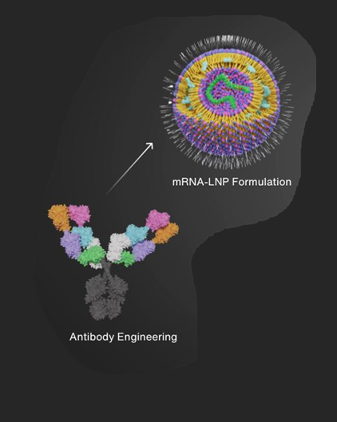
Introduction to BiTE Antibodies
Bispecific T-cell engagers (BiTEs) are a novel class of immunotherapeutics designed to engage and activate T cells to target and destroy cancer cells. They are engineered to simultaneously bind to two different antigens—typically, one on T cells (CD3) and one on tumor cells (e.g., CD19 for B-cell malignancies). This dual binding facilitates T cell activation and recruitment to the tumor site.
mRNA Lipid Nanoparticles (LNPs)
mRNA lipid nanoparticles are innovative delivery systems used to introduce messenger RNA (mRNA) into cells. The mRNA encodes for therapeutic proteins, such as BiTE antibodies. LNPs protect the mRNA from degradation and enhance its uptake by cells, making them a promising vehicle for mRNA-based therapies.
Mechanism of Action
- The mRNA is designed to encode a BiTE antibody that targets specific cancer antigens. This mRNA is then encapsulated in lipid nanoparticles.
- Delivery to Cells:Upon administration, the LNPs facilitate the delivery of the mRNA into host cells, particularly antigen-presenting cells and T cells.
- Translation and Expression:Inside the cells, ribosomes translate the mRNA into the BiTE protein, which is then expressed on the cell surface or secreted.
- T Cell Activation:The expressed BiTEs can engage T cells by binding to CD3 and the tumor antigen simultaneously, leading to T cell activation, proliferation, and targeted killing of the tumor cells.
Advantages of mRNA LNPs for BiTE Delivery:
1.Rapid Development
- mRNA platforms can be designed and manufactured quickly, allowing for rapid adaptation to emerging cancer targets.
2. Safety Profile
- mRNA therapies generally have a favorable safety profile, with minimal risk of insertional mutagenesis compared to traditional gene therapies.
3.Induction of Robust Immune Responses:
- The ability to stimulate T cells directly and the potential for generating long-lasting immune memory are significant advantages of BiTEs delivered via mRNA.

